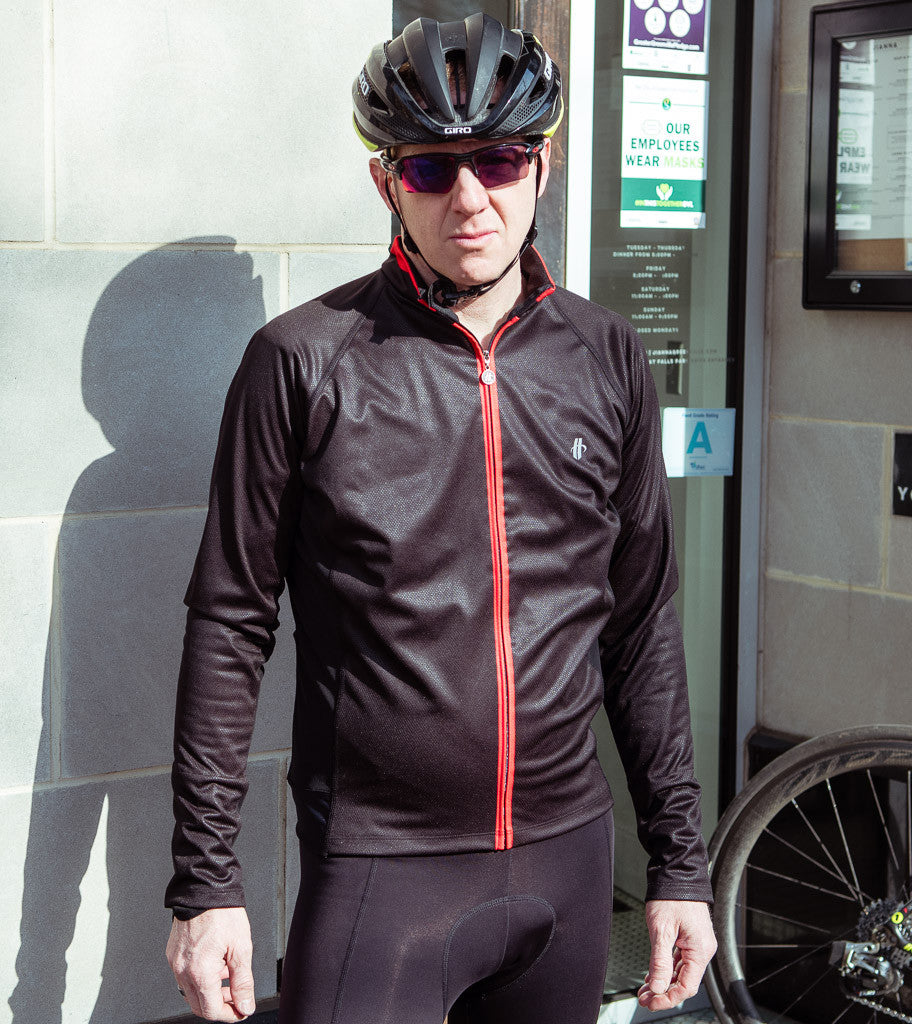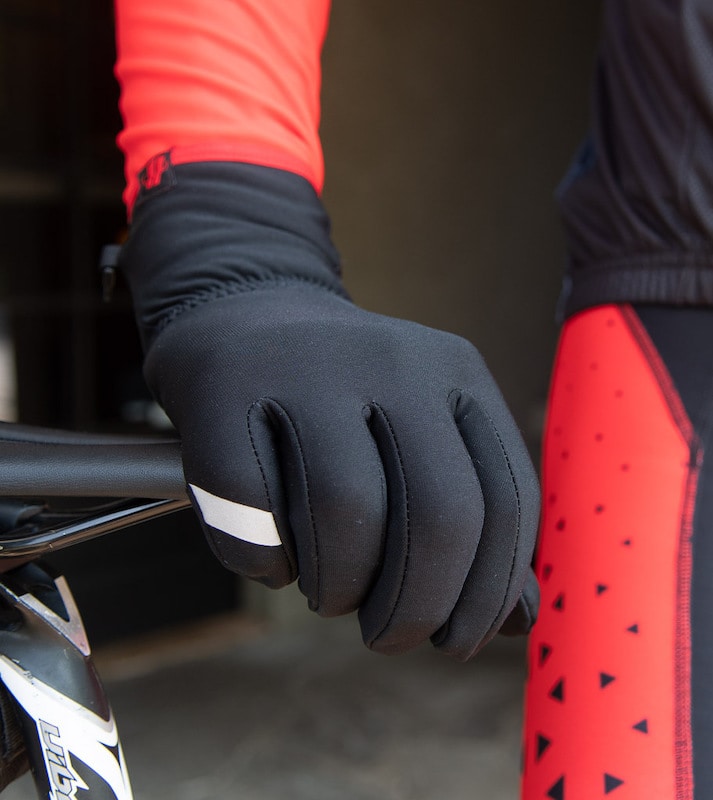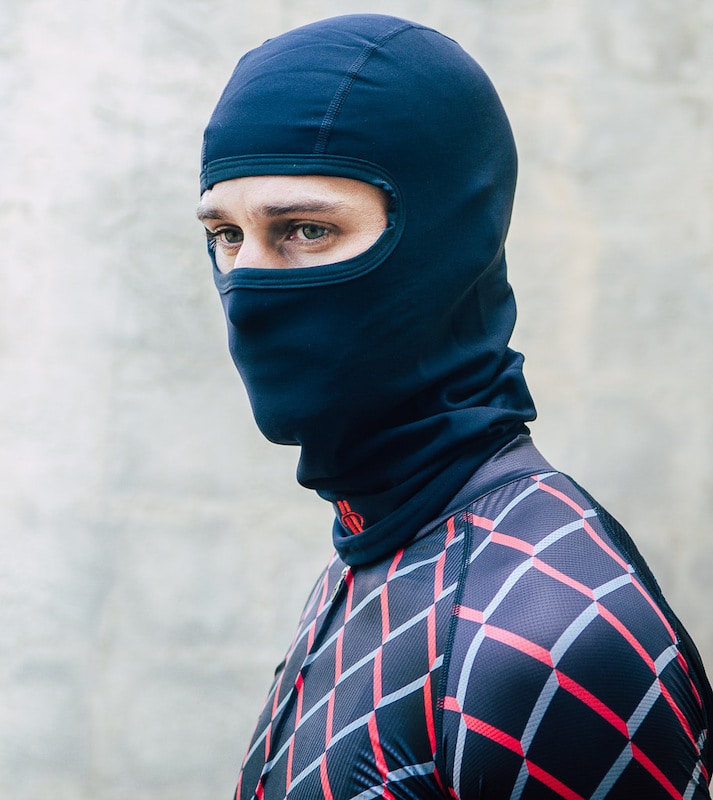Some say that winter weather cycling is quickly becoming a lost art amidst indoor exercise bikes with realistic virtual experiences. We now have another option besides gearing up and braving the cold, one where we can nearly roll out of bed and onto the bike just a few steps from a warm shower. Indoor and outdoor cycling in cold weather both have their perks and are worth appreciating; however, it’s not likely that we cycling die-hards and adventurers will stow our bikes for the winter at the first sign of a chill in the air and commit to indoor cycling for the rest of winter. Nonetheless, it is our responsibility to share the art of winter cycling to new cyclists who have not yet developed an affinity for snow crunching under tires or the energizing frigid temps. And, we could all use a reminder of the wonder of winter weather cycling and how to gear up and stay safe for cold-weather rides.
Pros and cons of cycling in the winter
Cons:
Cycling in the winter requires the proper gear and clothing from your head to your toes and onto your bike handlebars and down to the tires. The expense of new gear and the prep work needed for a long winter ride seem daunting for newbies or maybe, at times, a drudgery for weather-beaten cycling veterans. You also have to spend time testing your winter weather cycling kit until you understand the right combinations for your body in conjunction with the weather in your area so you don’t have to worry about freezing or, more likely, overheating.
When winter cycling, sweat is a nightmare if you aren’t wearing the right attire. Unequipped, sweating can make it nearly impossible to regulate your body temperature in freezing temps. Additionally, outdoor cycling in winter is not usually convenient. It helps to prepare when to cycle, for how long, and what to wear and bring with you in advance. If you want to be a regular winter cyclist, integrate it into your routine.
Pros:
For starters, winter scenery is stunning, and cycling lets you immerse yourself in the beauty of it in areas you might not otherwise venture to. Winter is still and the routes are often less crowded. Winter cycling is a great time to take in the scenery on your route and enjoy it at a less aggressive pace. The experience is refreshing and one that you feel proud of afterward. And if you’re well-prepared for your ride, gearing up should not be stressful. The prep may take a little work upfront, but it will become easier and customary.
Because you work harder to stay warm, you burn more calories cycling in the cold. Winter cycling can bring a welcome change to your training. You should adjust slowly and not expect to exceed or even match your previous training levels. You have to approach winter conditions cautiously, which may mean slowing down. Your muscles also tighten in the cold, and your body will have to work harder to warm up. If you can come to terms with not riding at pre-winter speeds, simply enjoy the ride without focusing as much on performance.
Is cycling in winter weather safe?
Cycling in winter weather is safe unless you and your bike are unprepared with the proper gear and bike maintenance. If you are uncomfortable riding in wintry conditions, whether snow or ice or slushy roads with traffic, then it’s probably not safe to do so. But bikes can be modified for winter and you can layer up. So unless you are uncomfortable, unprepared with the right gear, or there are dangerous external factors like heavy traffic, winter weather cycling is a safe sport.
Best winter weather cycling gear
When dressing to go for a cold-weather ride, layers are what you need. We mean layers of quality cycling clothes, not because we’re cycling snobs, but because layering articles of winter clothing gets heavy, bulky, uncomfortable, and impractical. Men’s and women’s cycling apparel is designed to be simple but effective. Winter-weather cycling gear is snug and thin and made to assist your position in the saddle and performance. When choosing cycling clothes, warm and cozy is not the goal; maintaining cool comfort is ideal. When you start out, you should feel a little chilly. You’ll warm up to a comfortable temperature as you ride, but overheating and sweating buckets will only make you miserable, especially if you remove a layer and your sweat begins to cool.
What to wear cycling in cold weather
- Light layers: The better the quality of your cycling gear, the less you have to layer and the more comfortable you are. A base layer should keep you dry; mid layers should keep you insulated; and outer layers should protect you from wind and rain or snow
- Full coverage: It’s crucial to keep your head, core, and hands warm, especially the feet since they remain stationary during a bike ride and could go numb. But do not layer your socks. Layered socks only increase the chances of numb feet.
- Wind and water-resistant pieces: You definitely want your cycling garments to block out wind and water, but at the same time, they must be breathable. Many times, waterproof clothing has pores that are close together, which makes it difficult for air flow to get in.
- Moisture-wicking materials: You’ll want to make sure every piece in your cycling kit keeps you dry and at a comfortable temperature.
Best clothes for your winter cycling kit:
1. A moisture-wicking base layer
Featured product: PowerCore Merino Long Sleeve Baselayer
This base layer is made of merino wool that keeps you insulated while wicking away moisture from your skin. Merino wool is naturally antibacterial because it wicks moisture so well, leaving no environment for bacteria to grow. It’s breathable so you barely notice you’re wearing it, but it makes a world of difference in regulating your core temperature.
Learn more: How to Buy a Cycling Base Layer: Size, Fit, and Style Guide
2. Bib tights
Featured product: Men’s Arenberg Bib Tight
These bib tights have an extra layer of insulation over the mid-section to keep your core warm. They’re insulating and moisture-wicking and have a 4-8 hour chamois, which makes them perfect for long winter rides.
Alternative: If the weather where you are isn’t quite frigid but chilly enough to need a warmer cycling kit, you may want to wear leg warmers, knee warmers, and arm warmers instead of long sleeves or tights. That way you can remove them if you get too warm.
Learn more: How to Buy Cycling Tights: Sizing, Fit, and Style Guide
3. A long sleeve cycling jersey
Featured product: Men’s Element Thermal Long Sleeve Jersey – Sundown

This jersey is thermal and has snug cuffs that keep cold wind out, but the breathable, moisture-wicking fabric keeps you from getting too warm.
4. A cycling jacket or vest
Featured product: Men’s Alsace Jacket

This jacket keeps you warm and dry in winter weather. The jacket provides the most wind protection and insulation out of every other piece in your kit. Its reflective accents ensure that you stay visible as winter evenings get darker.
Featured product: Men’s Roubaix Thermal Vest
You can wear this vest as your outer layer or layer it under your jacket. It keeps your core insulated and has a high neck to keep the cold from getting inside.
5. Gloves
Featured product: Performer Winter Glove
Cold weather can make it difficult to maintain control of your handlebars, so wearing gloves makes winter cycling a little safer. This glove is made from thermal fleece, so it keeps your fingers dry, protected, and insulated, while still allowing you to control your handlebars with a palm grip.
6. Socks
Featured product: Power Merino Wool Sock 6″ Cuff
These wool socks are thin and moisture-wicking. They prevent itching and protect you from the cold.
7. Head gear
Featured product: Arenberg Balaclava
The balaclava is meant to cover your head and face under your helmet. It has perforations to assist breathing, while keeping your face as insulated as possible. A Neck tube makes a good face warmer or mask, and a headband covers your ears so the air doesn’t chill them.
8. Cycling shoe covers
Featured product: Arenberg Shoe Cover
These sleek black shoe covers shield your feet from the elements and protect them from getting sweaty by wicking away moisture. This style fits most shoes and pedal types.
Shop all of our men’s winter cycling essentials or women’s winter cycling essentials. The types of cycling clothing needed for a women’s winter kit are the same as men’s, but with an additional moisture-wicking sports bra.
Gearing up for cold weather cycling
Serious winter cyclists may choose to purchase a winter-weather bike, but any bike can be adapted for winter riding. You need:
- Helmet lights and bike headlights so you remain in sight.
- Mudguards to protect your bike, legs, and feet from getting sprayed with water or snow in freezing temperatures.
- Anti-rust spray to use once you’ve wiped and dried your bike.
- Studded tires if riding in harsh winter weather, they will give you traction over snow and ice.
You may also like: Hot Weather Cycling Tips & Summer Gear
14 tips for winter cycling
- Stay seen. Add safety lights and wear reflective gear on the front and back of your bike and you. Save the brightest light for the rear so that people can see you even when you might not be able to see them.
- Use low tire pressure. Keeping tire pressure at the low end of range lets you come in closer contact to the road and increases traction.
- Check your tire pressure regularly. Tires lose pressure faster in cold weather, so it might be a good idea to check them before each ride.
- Have an extra cycling shell handy. Shells go over any type of apparel and can easily be removed and stuffed in a pocket or pouch when you get too warm.
- Start your winter riding slow. Don’t expect or even try to perform as well as you did in the summer, at least at first. Take your time getting used to the change in scenery and decide what type of riding feels best for the conditions.
- Keep a warm, insulated water bottle in your bottle cage. This will help prevent your drivetrain from rusting and warm you up inside if you decide to take a drink.
- Ride away from the curb. That’s where all the frozen snow gets piled and creates a cycling hazard. If traffic isn’t terrible, stay in the middle of the far right lane to remain visible.
- Keep your bike warm and dry. Wipe down the drivetrain after each ride and store your bike indoors if possible. If you must keep it outside, don’t forget to cover it.
- Wear sunglasses. Even in winter the sun still shines, maybe even more harshly than in the summer. UV rays reflect off of bright, white snow and into your eyes. Wearing sunglasses will prevent the sun’s rays from obstructing your vision. Learn more in our Cycling Sunglasses Buyer’s Guide: How to Choose the Right Pair for You
- Keep your phone fully charged and accessible. If you get stranded you’ll want to be sure you can find help and that they’re able to locate you.
- Eat before you leave. Cycling in cold weather burns lots of calories, so make sure you have enough energy and pack snacks in your pockets to replenish your supply of energy on longer rides.
- Stay hydrated. Unfortunately, wetter weather doesn’t keep you hydrated. You may not sweat as much as you would in the summer, but staying hydrated is still a must.
- Stop for a warm break on longer rides. If you’re in it for the long-haul, eventually your fingers, toes, and nose may start to go numb with cold. So plan a place to stop on your route, take a break, have a snack, and get warm before starting up again.
- Be alert and relax. Finally, stay alert to stay safe. Don’t let your mind wander and start cycling in auto-pilot. But at the same time, be sure to relax and enjoy your ride.
You might also like:







